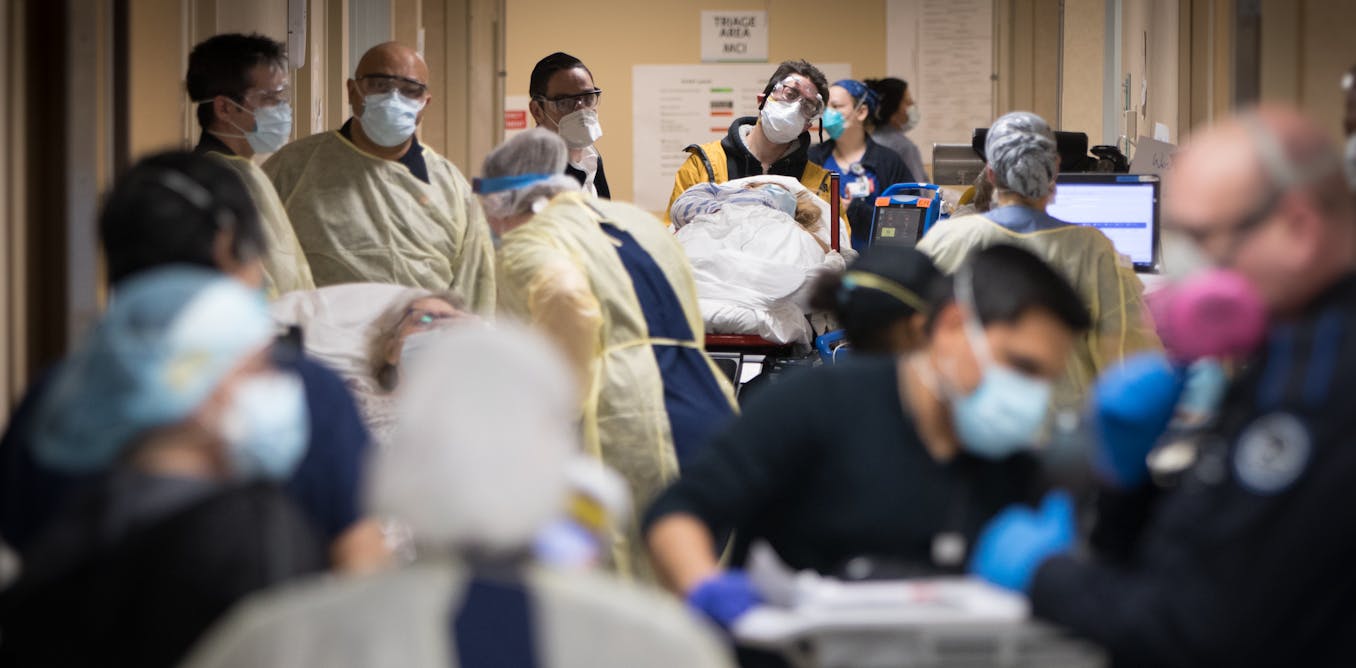Low-income countries' bids for World Bank funding raise serious concerns about their coronavirus strategies
The World Bank is giving $160 billion to help bolster the world’s weaker health systems – but it needs to do more.
May 18, 2020 • 7 min • Source
The World Bank intends to give out loans and grants totalling US$160 billion (£132 billion) to lower-income countries. The aim of this funding, to be disbursed over 15 months, would be to “help countries respond to immediate health consequences of the pandemic and bolster economic recovery”.
It’s clear that low and middle-income countries will need assistance responding to coronavirus. Recent research suggests that the outbreak will have a disproportionate impact on the world’s most disadvantaged people.
But while the World Bank’s quick response to help the world’s weaker health systems has been entirely appropriate, we think more balance is needed. Applicants plan to spend more on infrastructure than human resources, despite not having enough healthcare workers in many cases, and the wealthier countries have asked for the most money. There isn’t a common approach, and countries are not using the evidence available from their own health systems to inform their decisions.
Who is asking for what?
As of May 3, a total of 57 countries had been approved for World Bank funding. Seventeen funding projects had been approved as grants (totalling US$252 million), 31 as loans (totalling US$2.3 billion) and nine as mixed grant and loan packages (totalling US$229 million). The remainder of the money will be allocated over the coming months.
The first thing to note is that there is a lot of variety across applications so far. Of course, the need is urgent, and it is entirely appropriate that national governments determine where they can best spend the money. It is also possible that for each country, the requested funding might be supporting a broader national plan funded by other sources.
But if this is the case, the applications do not make this clear. For example, the funding requested varies in scale from US$0.40 per head of population (Malawi) to US$14.2 per head of population (Maldives). Meanwhile, spending on infrastructure and medical equipment – which includes hospital buildings and services, equipment for intensive care facilities, personal protective equipment (PPE) and medicine – makes up between 9.1% (Kyrgyz Republic) and 97.0% (Myanmar) of applications.
Many countries have prioritised infrastructure and equipment spending. For example, Myanmar intends to upgrade and equip facilities across 51 hospitals and double its number of intensive care beds from 380 to 718. Nearly all of its US$50 million grant is dedicated to this.
But in some countries, such a focus is clearly problematic. Kenya is devoting US$4 million to buying 250 ventilators, but only 22 out of 47 Kenyan counties have at least one intensive care unit, with a small fraction of these in the public sector. It’s also not clear whether there are sufficient staff to make use of them – there are only 160 physician anaesthetists in the country, with fewer than 50 in the public sector.
A potential oversight
Staffing levels of healthcare workers are critically low in many of the countries that have applied to the World Bank. How this will affect their pandemic response is understated in the applications. Our analysis indicates that in almost half of the proposals, less than 20% of the funding requested is being spent on health staff. Four countries are making no request to support their workforce at all.
At the same time, based on what can be gleaned from the proposals, in 68% of the countries seeking funds for human resources, all of the expenditure is devoted to training. So while countries have prioritised capital spending on expansion of hospital facilities and intensive care, it is not clear how staff will deliver these extended services.
This raises major concerns that the workforce providing other critical services – such as maternal, neonatal and child health services – will be co-opted into the COVID-19 response, harming one sector of the population to benefit another. Of course, the countries applying may have plans to address such concerns, but if this is the case, they are not sufficiently discussed in the project documents.
We also mustn’t forget that health workers are at considerable risk from COVID-19. Those in low-income countries must be watching the scenes emerging from the US and Europe and think: “If that can happen at those facilities, then what will happen to us?”
Criticisms of the response to COVID-19 in higher-income countries have centred around access to PPE, but the situation in poorer countries is even more concerning. Health worker strikes and complaints centred on inadequate pay and poor conditions have become more common in recent years. Strikes in Kenya, for example, closed hospitals for several months in 2017.
It is unsurprising then that health workers in lower-income countries have united to complain about the dangers presented to them by COVID-19. There have been strikes and protests in Pakistan, Mexico and Malawi. Yet in spite of this, only three countries explicitly state plans to compensate workers for their increased risk.
How the World Bank can respond
We believe that the World Bank should consider its funding relative to a country’s overall response and budget plans. The variability across countries’ proposals may point to a need for more informed strategic thinking, especially in countries with weak health systems.
At present, it seems that infrastructure might be overemphasised in the proposals relative to workforce spending. The proposals also exemplify the “inverse care law”, in that those countries with the weakest health systems have asked for relatively less funding per capita and may suffer most from the pandemic.
These concerns suggest greater attention should be paid to the balance of funding, to ensure it helps achieve the wider Sustainable Development Goals and realise countries’ plans for universal health coverage. This would also ensure that these countries’ COVID-19 responses don’t unnecessarily distort their health system priorities.
Michael (Mike) English receives funding from the Wellcome Trust. He is affiliated with the World Health Organization through advisory roles only.
Jacob McKnight and Yingxi Zhao do not work for, consult, own shares in or receive funding from any company or organisation that would benefit from this article, and have disclosed no relevant affiliations beyond their academic appointment.



